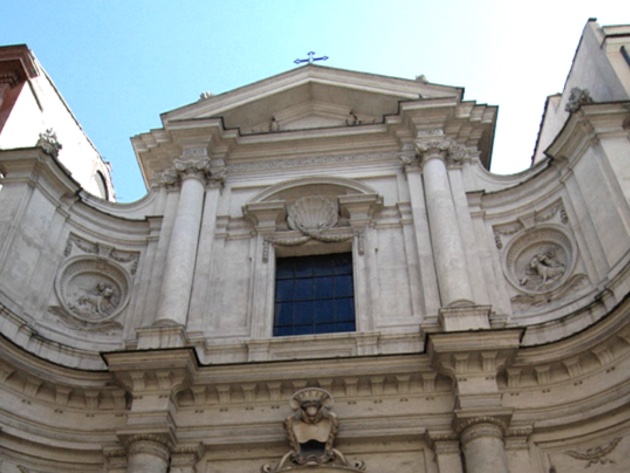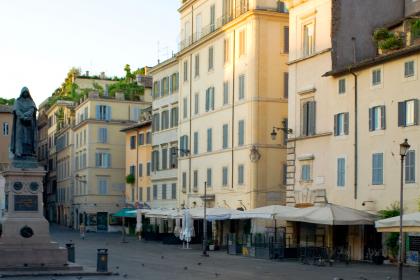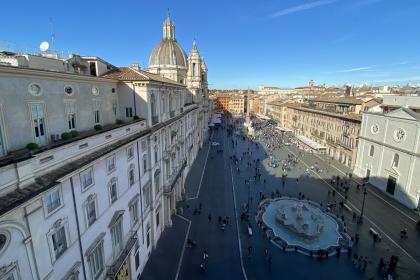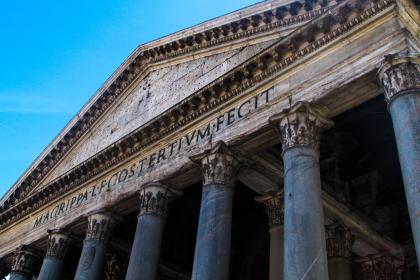
The church is located in via Giulia, in the historic centre, and it is linked to the history of the Sienese Archconfraternity, to which the building still belongs today. Built in 1526 on a design by the great architect Baldassarre Peruzzi, it was demolished and then rebuilt in 1766 by Paolo Posi.
The façade, which recalls Borrominian forms, is marked by columns and has two orders with a triangular tympanum crowning it. On the sides of the central window of the second order, Romulus and Remus with the she-wolf are depicted, symbol of Siena which, according to tradition, was founded by Senio, the son of Remo.
The interior has a single nave flanked by two chapels on each side and a barrel roof decorated in stucco by Giovanni Battista Marchetti. In the apsidal basin stands the large fresco by Lorenzo Pecheux de Lyon depicting the Return of Gregory XI from Avignon (1773), for which Saint Catherine of Siena worked so hard. In the presbytery, on the other hand, we find the painting by Gaetano Lapis, the Mystical marriage of Santa Caterina (1768), with a beautiful golden frame, supported by intertwined palms and crowned by a glory of cherubs.
In the basement of the church there is the ancient cemetery of the Sienese Archconfraternity and, crossing a courtyard, the oratory preceded by a statue of the Saint.
The church and the annexed rooms extend to the opposite side of the block, on via di Monserrato, where in 1912 the façade was rebuilt in imitation of Santa Caterina’s birthplace in Fontebranda area near Siena.
Photo credits: courtesy of the Sienese Archconfraternity official site
Campo de’ Fiori

 Condividi
Condividi
Navona Square

 Condividi
Condividi
The most iconic square of Baroque Rome
The Pantheon

 Condividi
Condividi
Information
For the timetable of the masses and visiting conditions, please consult the contacts.
 Condividi
Condividi
Location
To find out about all accessibility services, visit the Rome accessible section.











































